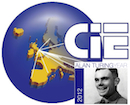[bibtex key=BrumleveHamkinsSchlicht2012:TheMateInNProblemOfInfiniteChessIsDecidable]
Infinite chess is chess played on an infinite edgeless chessboard. The familiar chess pieces move about according to their usual chess rules, and each player strives to place the opposing king into checkmate. The mate-in- problem of infinite chess is the problem of determining whether a designated player can force a win from a given finite position in at most moves. A naive formulation of this problem leads to assertions of high arithmetic complexity with alternating quantifiers—*there is a move for white, such that for every black reply, there is a countermove for white*, and so on. In such a formulation, the problem does not appear to be decidable; and one cannot expect to search an infinitely branching game tree even to finite depth.
Nevertheless, the main theorem of this article, confirming a conjecture of the first author and C. D. A. Evans, establishes that the mate-in- problem of infinite chess is computably decidable, uniformly in the position and in . Furthermore, there is a computable strategy for optimal play from such mate-in- positions. The proof proceeds by showing that the mate-in- problem is expressible in what we call the first-order structure of chess, which we prove (in the relevant fragment) is an automatic structure, whose theory is therefore decidable. Unfortunately, this resolution of the mate-in- problem does not appear to settle the decidability of the more general winning-position problem, the problem of determining whether a designated player has a winning strategy from a given position, since a position may admit a winning strategy without any bound on the number of moves required. This issue is connected with transfinite game values in infinite chess, and the exact value of the omega one of chess is not known.
Richard Stanley’s question on mathoverflow: Decidability of chess on infinite board?
 This will be a contributed talk at the Turing Centenary Conference CiE 2012 held June 18-23, 2012 in Cambridge, UK.
This will be a contributed talk at the Turing Centenary Conference CiE 2012 held June 18-23, 2012 in Cambridge, UK.
 This will be a contributed talk at the Turing Centenary Conference CiE 2012 held June 18-23, 2012 in Cambridge, UK.
This will be a contributed talk at the Turing Centenary Conference CiE 2012 held June 18-23, 2012 in Cambridge, UK.